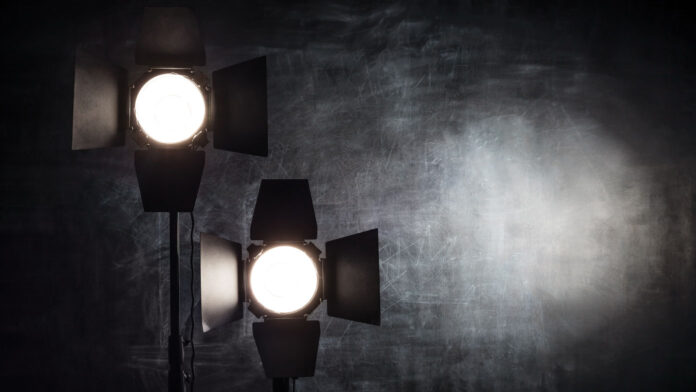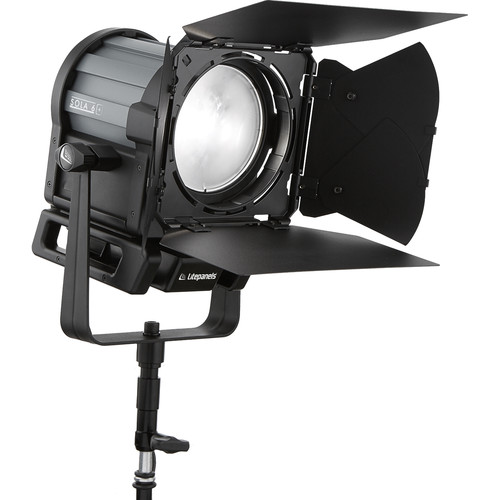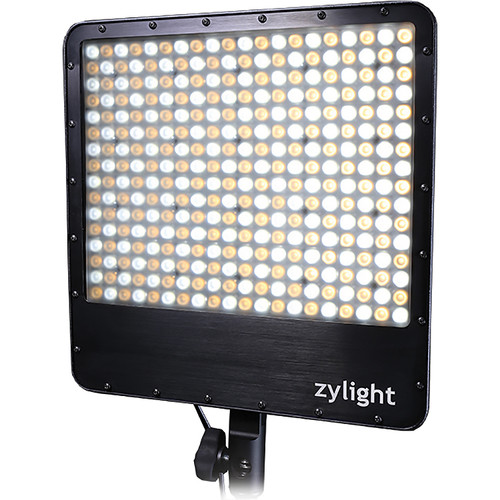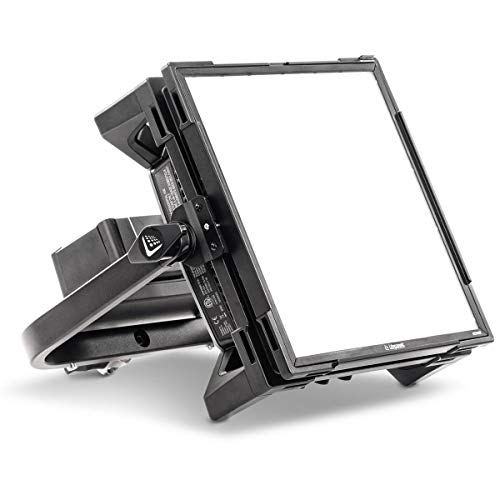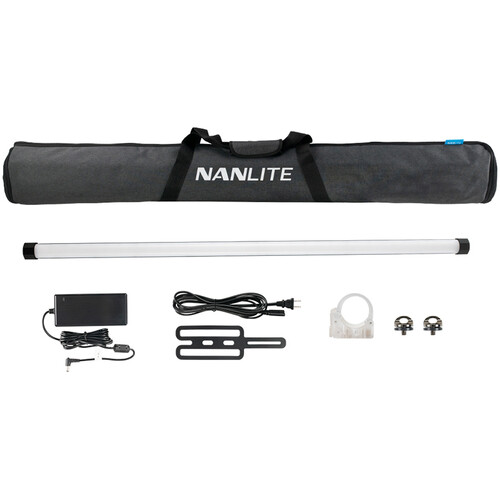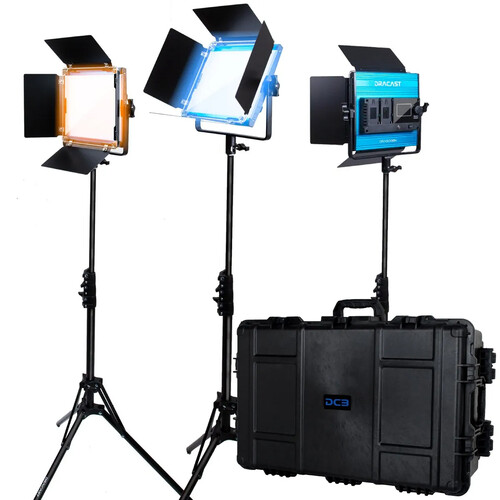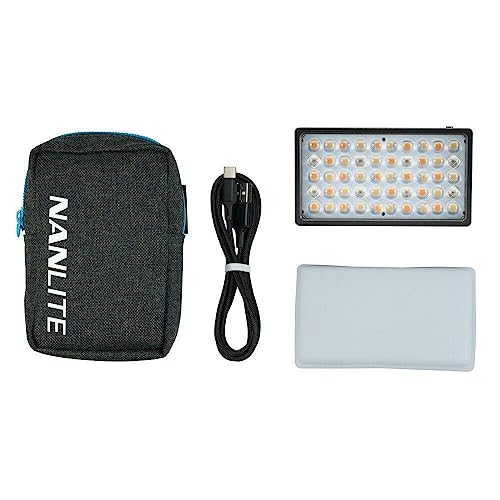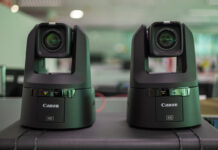There are several variables to consider in choosing the best lights to use for your next project. Color temperature, color rating, lighting type and power options are all important regardless of how the light will be used. Light quality, versatility and price point will need to be considered, as well.
First, we’ll highlight our favorite lights for a variety of applications. Then, we’ll take a closer look at the key aspects for a better understanding of how to choose a light or light kit for your next production.

The Editors’ Choice award recognizes exceptional video production equipment, software and services. These products must help videographers be more effective storytellers while being affordable, easy to use and dependable. The products must also deliver a superior user experience.
Best fresnel
Litepanels Sola 6+
The Sola 6+ is a daylight-balanced 6-inch LED Fresnel. It has a beam control of 16 to 67 degrees. It’s supposedly over 50 percent brighter than the Sola 6. It includes 8-way barn doors and also dims from 0 to 100 percent. It also offers the same LED lifespan, heat-free output and includes its 120-240 VAC, 50/60 Hz Power Supply.
Best panel
Zylight Go-Panel Bi-Color LED Light
This Zylight LED Panel features +/- green and magenta, a USB port for firmware updates and DMX controls. It features Zylight’s patented Active Diffusion, where you can electronically adjust diffusion with the turn of a knob. This allows for easier adjustments of diffusion. It also features a 26-degree beam. Color temperatures range from 3100K to 6200K.
The light panel includes a AC power supply and can also be powered by a 14.4V camera battery through an attached plate.
Best multi-purpose light
Litepanels Gemini 1×1 RGBWW LED Panel
The Litepanels Gemini 1×1 is a LED soft panel. It features multiple lighting modes, including CCT, Hue, Saturation, Gel presets and an effects mode. CCT has six factory presets ranging from 2700K to 10,000K. HSI mode allows you to adjust hue, saturation and intensity. The gel mode gives you a variety of filters to choose from. The light is dimmable from 100 to 0.1% without flicker.
Best tube light
Nanlite PavoTube II 30X RGB LED Pixel Tube Light (4′)
The Nanlite PavoTube II 30X RGB LED Pixel Tube Light is a 4-foot-long T12-compatible lighting solution that delivers impressive performance for both photo and video applications. Providing up to 746 lux at 3.3 feet (5,600K), this versatile tube light offers an extensive CCT color range of 2700 to 12,000K, allowing it to adapt to various ambient light situations and match other fixtures. Furthermore, its full-spectrum RGB capabilities grant access to millions of colors and hues to meet your creative needs. With an average CRI of 97 and TLCI of 98, adjustable color temperature and green/magenta adjustment, the PavoTube II 30X ensures professional-grade color accuracy and control.
Best kit
Dracast S-Series LED500 Plus Bi-Color LED 3-Light Kit with NP-F Battery Plates
This kit comes with three daylight LED light panels with pre-installed battery plates, as well as stands, barndoors, diffusion filters and soft cases for each light in addition to a hard case for the kit. The lights are rated at CRI 95 and offer 10-100% dimming. They also feature Dracast IRR, which allows for the control of multiple lights through a single fixture.
Best budget light
Nanlite LitoLite 5C RGBWW Mini LED Panel
The Nanlite LitoLite 5C RGBWW Mini LED Panel is a portable, bright light that’s small enough to fit right into your pocket. It features an internal Li-Ion battery and charges through USB-C. As for its color temperature range, its adjustable from 7500-2700K with green to magenta shift. Additionally, you can utilize the light’s 360° hue control with 100 levels of color saturation adjustment and 15 pre-programmed adjustable lighting effects.
The Nanlite LitoLite 5C RGBWW Mini LED Panel provides great, portable lighting and is ready to use at any time, anywhere.
Features we considered
The following features are not all weighted equally for each category. However, when you’re looking for the best lights for video production, you must consider all of them, along with the price, before making a purchasing decision.
Color temperature
Color temperature is a measure of the color quality of a light measured in degrees Kelvin. It’s an important factor, especially when working with multiple different light sources. If we were shooting inside a house lit by Tungsten lights rated at 3,200 kelvin and we balance accordingly, the light inside will appear white, while the daylight beaming through the windows will appear blue. Inversely, if we were to white balance inside that room for the light coming in through the window, those Tungsten light sources would appear orange. Most of the time, the goal is to unify the color temperature of all of your light sources, either through the use of gels or simply by choosing light sources that all output at the same color temperature.
As you shop, consider what color temperature will best suit the type of work you do. Will you need lights that are balanced for indoors 3200K, outdoors (5600K) or maybe ones that offer variable control and can provide a wide range of color temperatures? The answer will depend on where you will spend the most time shooting and what other lights you may already have in your kit.
Color rating
Color rating is a measurement of how well the light system will accurately reproduce color. The Color Rating Index (CRI), developed in the 1960s, measures how well the light will reproduce the full range of colors in a subject compared to a standardized source. 100 is the perfect color rendition score; a CRI of 95 or above is preferred.
Television Lighting Consistency Index (TLCI) is a similar but more modern measurement. Instead of relying on a human observer to measure color variance, TLCI measures color changes that can be detected by a video camera. A TLCI score above 90 is acceptable.
Light quality
You’ll also need to consider whether you want to light your scene using hard or soft light. Hard lighting is direct, creating lots of contrast with hard shadows; it feels very dramatic and accentuates textures and detail. Hard light is specular, collimated and highly directional. Most of the time, hard lighting will come Fresnel lights, which use a special lens to focus a beam of light to suit your needs.
Soft lighting is diffused and seems to wrap around a subject. It leaves shadows with gradual, soft edges between light and dark. Soft lighting is often thought to be more flattering to subjects, making people appear more youthful and reducing wrinkles. Soft lighting adds a sense of depth to a subject. In general, if you need soft light, you’ll be looking at panels and lights with soft boxes.
Knowing how lighting will affect an audience allows video producers to create a specific tone, and ultimately, tell stories more effectively.
Hard and soft light each create a specific feeling in viewers. Knowing how lighting will affect an audience allows video producers to create a specific tone and, ultimately, tell stories more effectively.
Power
Next, you’ll have to consider how the light will be powered: AC, battery or both? Someone who works primarily in a studio will have very different needs than a run-and-gun documentary crew. Along with power options, you’ll also want to know the light’s draw and output. How much energy does the light use, and how much light does it produce? Output can be measured in terms of wattage (w), lumens, candela, lux or foot-candles (fc).
Lighting types
Finally, let’s look at the four main types of light used in video production. Each has its advantages and disadvantages, and some types are more affordable than others.
HMI
HMI lights use mercury vapor and metal halide to create a high output of light with decent energy efficiency. The light provided from HMI’s is very similar to that of natural sunlight (6000K), making them daylight balanced. These lights cost a lot upfront but can save on power costs in the long run. On the downside, they require bulky ballasts and are not fully dimmable. You’re not likely to encounter one of these large, expensive lights unless you’re working on a professional film set. We don’t recommend HMI lighting for the average video producer.
Tungsten
Tungsten lights are like super-powerful versions of the old incandescent household light bulb. At 3200K, Tungsten is the standard color temperature for indoor lighting. Other color temperatures will require gels. Tungsten lights are lower-cost and have good color rendition. On the downside, they get hot, they require lots of power and the bulbs require sensitive care. Always handle tungsten lamps with gloves, even when cool, since oil from your fingers can cause the lamp to explode. For decades, Tungsten lighting dominated on set, but with new technology, fluorescent and now LED lighting is becoming more prevalent. This is thanks to relatively low power draws and cooler handling temperatures.
Fluorescents
Fluorescent lights use gas to create a glow, which is amplified by a layer of phosphor coating. These lights are very energy efficient and can have a range of color temperatures from 2700K to 6500K. Fluorescent lighting is compact and generates little heat. Regular-use fluorescent lighting can create problems with ‘flicker’ and color rendition, but fluorescent lighting made specifically for video doesn’t usually suffer from the same issues. Professional fluorescent lights have special ways to negate the flicker and poor color quality inherent in home-use fluorescents, but they are considerably more expensive.
LED
Light emitting diode (LED) units are energy efficient but are known to produce limited output. LEDs can provide variable light across the RGB spectrum and often feature bi-color functionality to allow easy switching between daylight and Tungsten color temperatures. They are a fast-growing part of the landscape and are increasingly being used in Fresnel light fixtures as well as panels. LEDs have an extremely long lifespan, allow for full dimming and are very rugged and safe units compared to the other bulbs. They can be more expensive, but prices are coming down every year as this technology becomes more widespread and economical.
Conclusion
Knowing your needs and how they fit into the current marketplace makes it easier to get the right tools. Becoming familiar with the range of lights available will help you choose the right tool for the jobs ahead.
Contributors to this article include Erik Fritts and the Videomaker Editorial Staff.

